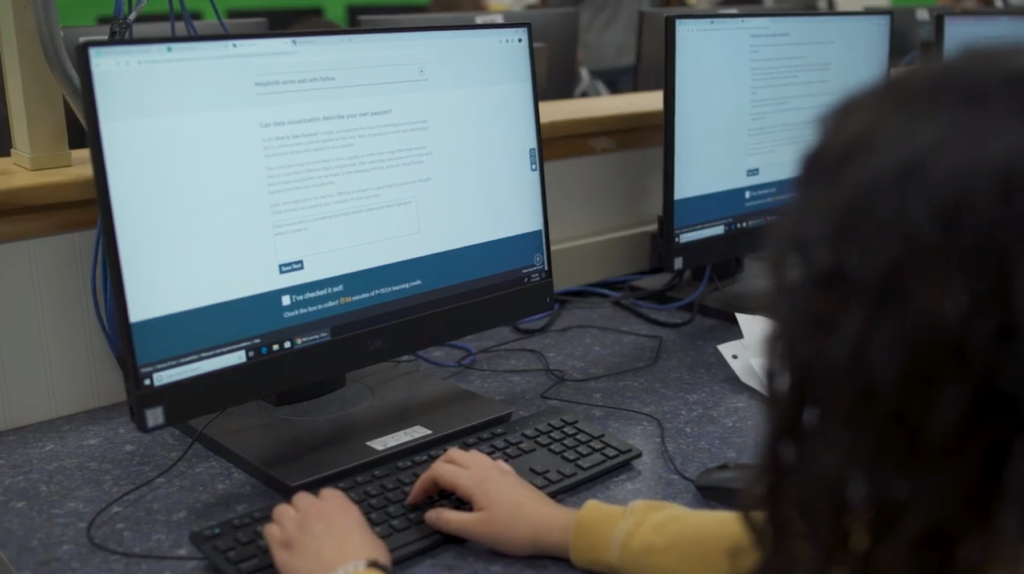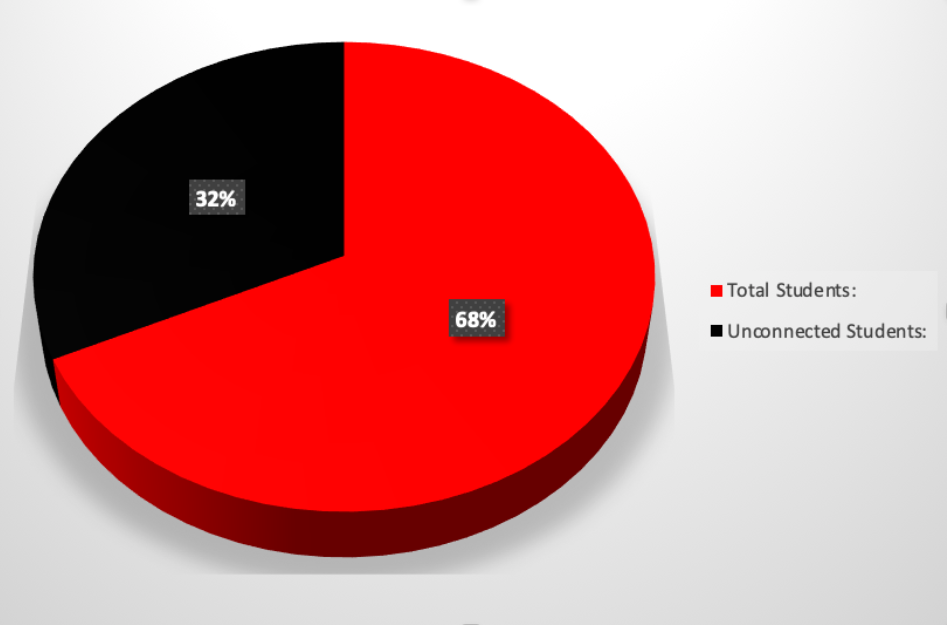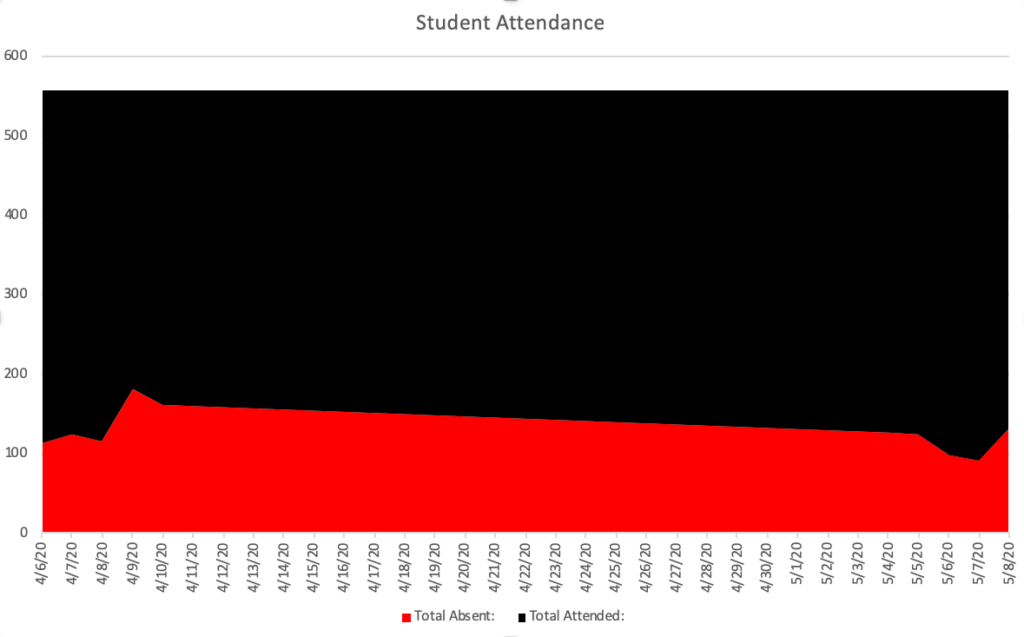
A student completes her work on a desktop computer located at Pathways in Technology Early College High School.
Photo Credit: Penelope Blackwell
An estimated 300,000 public school students across New York City scrambled to find devices and internet connections when the coronavirus pandemic first prompted a city-wide school shut down in mid-March.
Even some students in Brooklyn’s Pathways in Technology Early College High School, a school founded in partnership with IBM, a leading technology hardware corporation, were left without access to digital devices and internet connections.
Located in Crown Heights, P-Tech first opened its doors in 2011 after partnering with IBM to help its students build the skills needed for the technology industry.
After the official shift to online learning began on March 23, NYC’s Department of Education struggled to reach students and develop uniform practices to get students online.
“When we first made the switch, 30 percent of our students were not logging on for classes,” said Victor John, the assistant principal of P-Tech. “And we needed to first track down a portion of our students before dealing with getting them online.”

Attendance monitoring for P-Tech’s population of about 600 students is tracked through “interactions” rather than “online participation.” Students are expected to engage with their teachers via email, phone call or video conferencing at least once per school day.
But the need for students to communicate with their teachers extends beyond P-Tech. About 25,000 devices were first distributed to students in NYC beginning on March 26. And according to the DOE, “the city prioritized devices for students who live in public housing, come from low-income families or are homeless.”
According to John, the school’s attendance rates increased by 20 percent as more students became equipped with Apple iPads loaned by the city’s education department and several internet providers and wireless companies have offered free WIFI. While some students remain unconnected, attendance teachers are working to interact with every student online.

NYC officially began recording attendance numbers on April 6 since the global pandemic began. John is responsible for uploading the attendance information into the citywide database, STARS, to regularly update attendance information for each school day.
“We are limited with our outreach, because we can’t just show up at their door to get in touch with them. But we send emails and call students often,” said Larry Griffin, an attendance teacher at P-Tech.
Teachers in NYC must update paperwork daily, and exchanges between teachers and students are crucial for the counts. Although teachers may get in touch parents or legal guardians, the DOE has required “interactions” to be directly between teachers and students for counts to be taken.
In the weeks that followed the beginnings of remote learning, school leaders and students had to develop new practices to continue learning. As P-Tech prepares for the fall semester, they are entertaining the idea of alternate scheduling.
The alternate scheduling option would allow selected grades to enter the school building on a limited number of days throughout the week in an effort to get students back into school buildings in light of the predictions made of a possible COVID resurgence.
“As challenges ahead loom large, I also know that schools can’t do the hard work alone. The public and private sectors must collaborate to greater degrees, sharing their distinct expertise to ensure access to the best learning opportunities for all our children, both through distance learning and classrooms,” wrote Grace Suh, vice president of IBM Corporate and Social responsibility on a personal blog.
In 2010, when the P-Tech school model was first developed, leaders questioned the sustainability of providing personal laptops to students as the framework expanded globally.
“The partnership is centered around professional development and because students could access modules and material through campus computers, that’s where the focus has been,” said Kathleen Leasor, an IBM Corporate Social Responsibility and External Relations spokesperson.
John explained, that although IBM has never provided schools with computer devices, “their financial commitment has been hiring our students for paid internships and in human capital.”
Students across the nation have had summer opportunities converted into remote experiences or canceled entirely for the summer of 2020 – and that is also the case for roughly 30 students at P-Tech selected for the company’s internship.
“Principal Davis has reached out to IBM on behalf of the students to inquire about remote internships. But as of now, the students that received the internship this year, will have to complete it next year,” said John.




I am shocked that children do not have devices that could have aided their learning. Here in the UK I dont know any child that that does not have a smart device